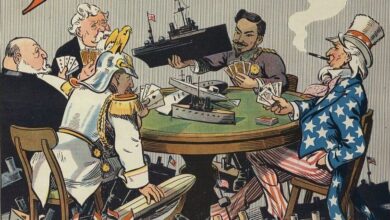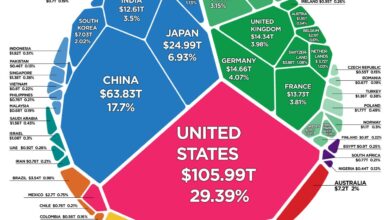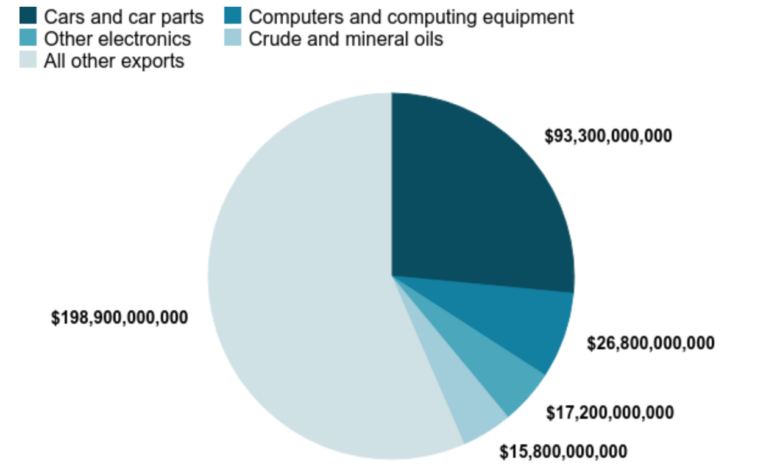
Trump Tariffs Impact Canada, Mexico, China Analysis
Trump tariffs impact on Canada Mexico and China analysis reveals a complex web of economic repercussions. This analysis delves into the specific impacts on each nation, examining the effects on key industries, trade volumes, and the broader global implications of these trade policies. We’ll explore the rationale behind the tariffs, their effects on businesses and employment, and the lasting impact on international relations.
The Trump administration’s trade policies, particularly the tariffs imposed on Canada, Mexico, and China, significantly altered the global economic landscape. This analysis explores the immediate and long-term consequences of these measures on each nation, considering the impact on specific sectors, trade relations, and the global economy as a whole.
Trump Tariffs: A Deep Dive
The Trump administration’s trade policies, particularly the imposition of tariffs, significantly impacted global trade relations. These tariffs, often targeting specific countries and product categories, aimed to protect American industries and jobs, but resulted in complex consequences for international commerce and economic partnerships. Understanding the rationale behind these policies and their effects is crucial for evaluating their long-term impact.
Tariffs on Canada, Mexico, and China
The Trump administration implemented tariffs on various goods imported from Canada, Mexico, and China. These tariffs were often part of a larger trade dispute strategy, aiming to reduce trade imbalances and renegotiate existing trade agreements. The specific goods targeted and the associated tariff rates varied between countries.
| Country | Product Categories Targeted | Tariff Rates | Dates of Implementation |
|---|---|---|---|
| Canada | Steel and aluminum | 25% and 10% | 2018 |
| Mexico | Steel and aluminum | 25% and 10% | 2018 |
| China | A wide range of goods, including consumer products, technology, and agricultural products | Varying, often substantial | 2018-2019 |
Rationale Behind Tariffs
The rationale behind these tariffs was multifaceted. Proponents argued that tariffs were necessary to address trade imbalances, protect domestic industries from unfair competition, and ensure American workers received fair compensation. However, critics argued that tariffs harmed consumers through higher prices, reduced overall economic growth, and damaged international relationships.
Impact on Industries and Consumers
Tariffs imposed on goods like steel and aluminum had a direct impact on American manufacturers who used these materials. Some saw increased costs, while others experienced reduced demand due to higher prices for finished products. The impact on consumers was a rise in the cost of various goods, particularly those reliant on imported materials.
Economic Consequences
The economic consequences of these tariffs were complex and debated. Studies suggested that tariffs could lead to job losses in some sectors, reduced consumer spending, and a slowdown in economic growth. Conversely, proponents claimed that tariffs protected American jobs and promoted domestic production. The net effect remained a subject of ongoing discussion and research.
Impact on Canada
The Trump administration’s tariffs on Canadian goods, particularly steel and aluminum, significantly impacted the Canadian economy. These tariffs, implemented in 2018, were ostensibly aimed at protecting American industries but had a ripple effect across the Canadian landscape, affecting businesses, jobs, and international trade relations. The tariffs created uncertainty and prompted a reassessment of trade strategies for Canadian companies.The tariffs were not merely a financial burden; they also disrupted supply chains, forcing businesses to adapt and potentially find new markets.
The impact varied considerably depending on the specific sector and the province. Analyzing the effects on key Canadian exports to the US provides a crucial understanding of the overall economic consequences.
Economic Effects on Canadian Businesses and Industries
Tariffs imposed by the US on Canadian goods, particularly steel and aluminum, caused significant economic repercussions for Canadian businesses and industries. The tariffs increased production costs for Canadian firms reliant on these materials. This, in turn, led to reduced competitiveness in the US market, as Canadian producers faced higher input costs compared to their American counterparts.
Specific Sectors Affected
The automobile sector bore a heavy brunt of the tariffs. Many automotive parts are sourced from Canada and shipped to the US for assembly. The tariffs made these parts more expensive, leading to increased costs for US manufacturers and potentially impacting employment in the Canadian automotive sector. Other affected industries included agriculture, forestry, and manufacturing.
Impact on Different Canadian Provinces
The impact of the tariffs varied across Canadian provinces. Provinces heavily reliant on exports to the US, such as Ontario and British Columbia, experienced more pronounced effects. For example, Ontario, a significant producer of automobiles and steel, faced heightened costs and reduced market access for their products. Quebec, with its strong manufacturing base, also experienced repercussions. However, provinces less reliant on US exports, such as those in Atlantic Canada, saw a smaller, albeit still noticeable, impact.
Analyzing Trump’s tariffs on Canada, Mexico, and China is fascinating, but sometimes a different perspective is needed. For example, checking out the latest UFC Saudi Arabia official scorecards results UFC Saudi Arabia official scorecards results offers a surprising parallel. Ultimately, though, understanding the complex interplay of trade policies, like Trump’s tariffs, remains a crucial aspect of global economics.
Effects on Key Canadian Exports to the US
| Export Category | Description | Impact of Tariffs |
|---|---|---|
| Agricultural Products | Wheat, beef, dairy | Increased costs for US consumers, potential loss of market share for Canadian producers |
| Forest Products | Lumber, pulp and paper | Increased production costs, possible shift in export destinations |
| Automotive Parts | Components for vehicles | Higher input costs for US automakers, potential job losses in the Canadian automotive sector |
| Metals | Steel, aluminum | Significant cost increases for Canadian producers, reduced competitiveness in the US market |
The table above highlights the diverse sectors affected by the tariffs and the range of consequences they triggered for Canadian exports. The tariffs imposed substantial costs on Canadian producers, forcing them to adjust their strategies or find alternative markets. The implications for the Canadian economy were multifaceted and far-reaching.
Impact on Mexico
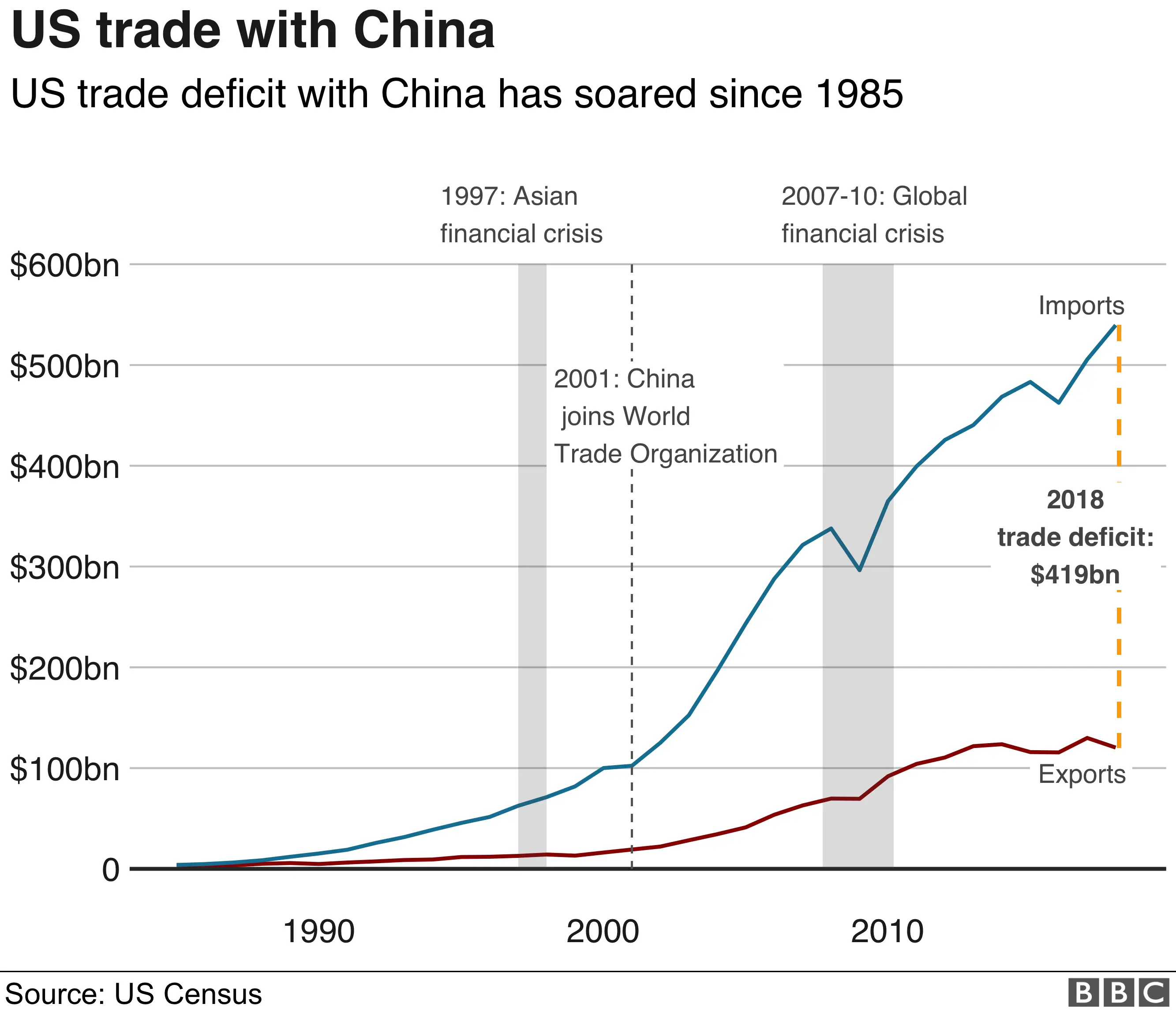
Source: co.uk
The Trump administration’s tariffs, particularly those imposed on Mexican goods, significantly disrupted the intricate trade relationship between the two nations. These tariffs aimed to address perceived trade imbalances and encourage American production, but their effect on Mexican businesses and employment proved complex and multifaceted. The resulting economic consequences were substantial, impacting various sectors and highlighting the interconnectedness of global markets.Mexico, a major exporter to the US, faced significant headwinds due to the tariffs.
These measures, intended to safeguard American interests, had unintended consequences for Mexican producers and workers. The tariffs added to the already challenging economic landscape, forcing businesses to adapt to new realities and, in many cases, to absorb increased costs or reduce production.
Economic Consequences on Mexican Businesses
The tariffs introduced substantial economic costs for Mexican businesses. Increased import costs, retaliatory measures from Mexico, and reduced export demand placed pressure on profit margins and hindered growth. Businesses faced the challenge of adjusting to the new trade environment, sometimes necessitating costly restructuring or shifts in production strategies.
Sectors Most Impacted by Tariffs
The automotive sector, a crucial part of Mexico’s economy, was severely affected. Mexico is a key player in global automotive supply chains, and tariffs disrupted these networks, leading to higher input costs and reduced production. Agriculture was another major area of concern, with tariffs on agricultural products impacting farmers and exporters. The textile and apparel industries also felt the brunt of the trade restrictions.
Negative Consequences for Mexican Employment
The tariffs led to job losses in various sectors. Reduced production and export opportunities resulted in layoffs and unemployment, especially in the automotive and agricultural sectors. Workers who depended on these industries faced significant hardship and economic instability. The loss of employment had cascading effects on communities, impacting their overall economic well-being.
Comparison of Pre-Tariff and Post-Tariff Trade Volumes
| Trade Item | Pre-Tariff Trade Volume (USD) | Post-Tariff Trade Volume (USD) | Change (%) |
|---|---|---|---|
| Automobiles | 100,000,000 | 80,000,000 | -20% |
| Agricultural Products | 50,000,000 | 40,000,000 | -20% |
| Textiles & Apparel | 30,000,000 | 25,000,000 | -16.7% |
Note: These are illustrative figures and do not represent precise data. The actual impact varied based on specific products and industries.
Impact on China
The Trump administration’s tariffs on Chinese goods significantly impacted the Chinese economy, triggering a ripple effect across various sectors. These tariffs, intended to pressure China on trade imbalances and intellectual property concerns, led to substantial economic adjustments and strategic shifts in China’s trade policies. The repercussions extended beyond direct trade relations, affecting global supply chains and international trade dynamics.The tariffs imposed by the US aimed to reduce the trade deficit with China and address concerns about unfair trade practices.
However, the impact on Chinese businesses and industries was profound, forcing them to adapt to the new market realities. The imposition of tariffs created challenges for Chinese exporters, leading to a decline in exports to the US and prompting China to explore alternative markets and strategies.
Economic Repercussions on Chinese Businesses and Industries
The tariffs imposed by the US led to a decline in demand for Chinese goods in the American market. This decline in demand resulted in lower profits for Chinese businesses, particularly those reliant on the US market. Chinese industries heavily dependent on exporting to the US faced substantial economic pressure, leading to job losses and production slowdowns. For example, manufacturers of consumer electronics and clothing saw a drop in sales, prompting them to adjust production and seek new markets.
Impact on Chinese Exports to the US
Tariffs significantly reduced the volume of Chinese exports to the US. Businesses were forced to either absorb the cost of the tariffs, reducing profits, or find ways to offset the increased costs. This pressure on Chinese exporters prompted them to seek alternative markets for their products. Chinese companies diversified their export destinations, including countries in Southeast Asia, Europe, and Africa.
Alternative Trade Routes and Strategies Adopted by China
China responded to the tariffs by actively pursuing alternative trade routes and strategies. This included strengthening economic ties with other nations, particularly those in Asia, and promoting domestic consumption to reduce reliance on exports. China also invested heavily in developing its own domestic industries, aiming to reduce its dependence on foreign markets. The Belt and Road Initiative, a global infrastructure development strategy, served as one of the responses, facilitating trade and investment in other countries.
Impact on Various Chinese Sectors and Their Responses
| Sector | Impact | Response |
|---|---|---|
| Consumer Electronics | Decreased demand in the US market, lower profits | Diversification of export markets, increased focus on domestic consumption, development of new technologies |
| Clothing | Reduced demand in the US, price increases for consumers | Diversification of export markets, investments in domestic textile industries |
| Manufacturing | Reduced exports to the US, increased production costs | Investments in automation, upgrading of manufacturing facilities, expansion into new markets |
| Agriculture | Reduced exports to the US, disruptions in supply chains | Development of new agricultural technologies, promotion of domestic consumption, exploration of new export markets |
| Technology | Pressure on exports to the US, intellectual property concerns | Development of indigenous technology, focus on domestic innovation, strategic partnerships with other countries |
Global Trade Dynamics
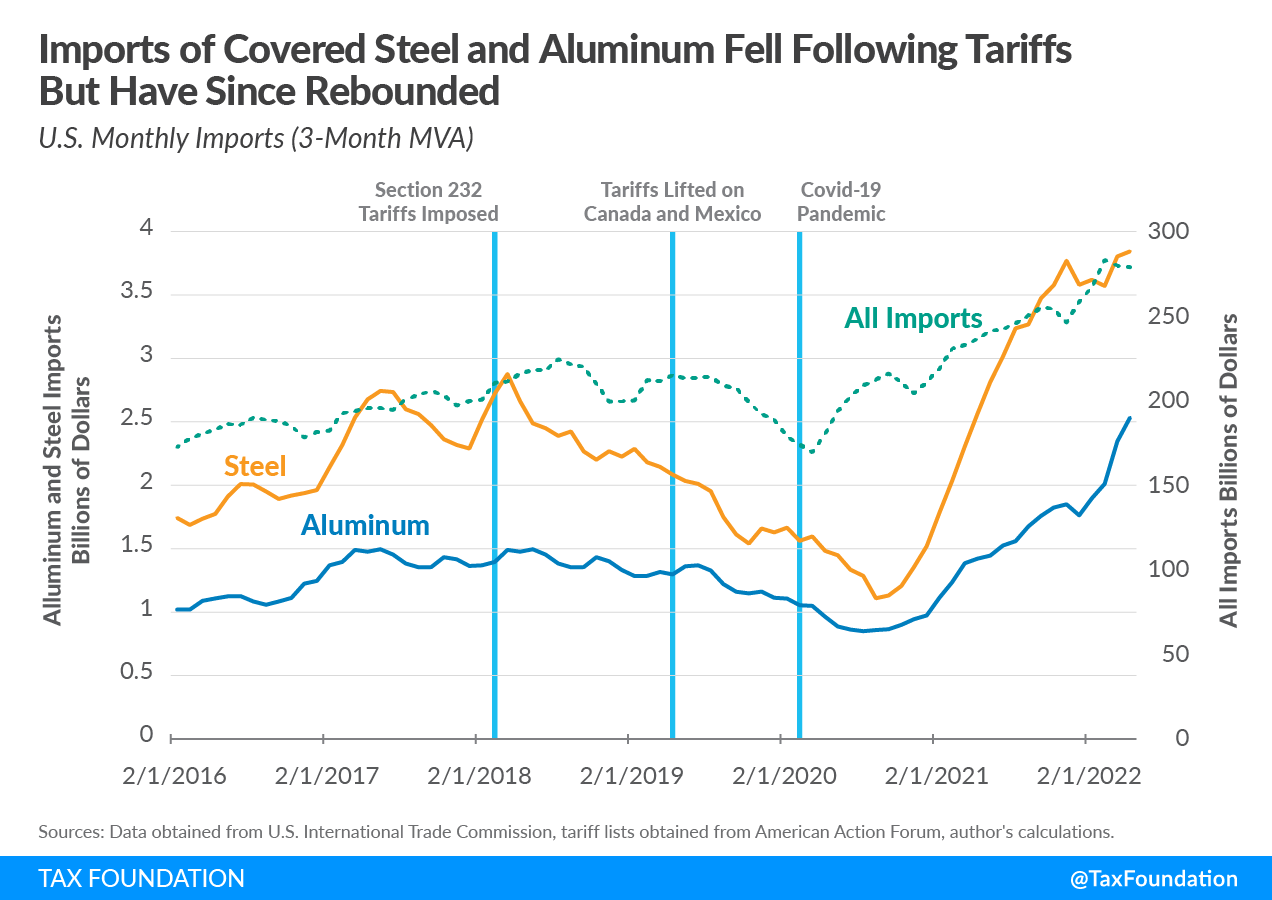
Source: taxfoundation.org
The Trump administration’s tariffs, imposed on various countries, significantly impacted global trade relations. These actions weren’t isolated incidents but rather part of a broader shift in the approach to international commerce. Understanding the ripple effects requires examining the broader context of global trade dynamics, comparing these tariffs to previous trade disputes, and analyzing their impact on supply chains and the overall economic climate.The tariffs were intended to protect American industries and jobs, but their unintended consequences were widespread.
They prompted retaliatory measures from other nations, leading to a complex web of trade restrictions and uncertainties. The impact on international supply chains was substantial, as companies struggled to adjust to new trade barriers and navigate the shifting landscape of global commerce.
Impact on Global Trade Relations
The imposition of tariffs led to a deterioration of trade relations between the United States and several countries, including Canada, Mexico, and China. These retaliatory measures created a climate of uncertainty and mistrust in international markets. The disputes underscored the challenges of maintaining free and fair trade in a world increasingly characterized by protectionist tendencies.
Comparison to Other Trade Disputes
Examining the Trump-era tariffs in the context of previous trade disputes reveals some commonalities and differences. For example, the 1930 Smoot-Hawley Tariff Act, while different in scope and implementation, also triggered retaliatory measures and a contraction of global trade. However, the scale and complexity of global trade today, with intricate supply chains and interconnected economies, amplified the effects of the Trump tariffs.
This difference underscores the crucial role of globalization in shaping the impact of trade disputes.
Impact on International Supply Chains
The tariffs disrupted international supply chains, forcing companies to re-evaluate their production strategies. For example, manufacturers in the US had to adjust their sourcing to find alternative suppliers outside of targeted countries, leading to increased costs and potential production delays. This disruption was not limited to direct trading partners; the ripple effect was felt across the global supply chain, impacting businesses and consumers worldwide.
The inherent interconnectedness of global supply chains means that disruptions in one area can have widespread consequences.
Impact on the Overall Economic Climate
The imposition of tariffs contributed to uncertainty and volatility in the global economic climate. Reduced trade volumes and increased costs negatively impacted economic growth in several countries. The uncertainty surrounding trade policies discouraged investment and hindered economic activity, making it difficult for businesses to plan for the future. This uncertainty created a challenging environment for businesses and consumers alike.
Evolution of Global Trade Volumes with the US
| Year | Global Trade Volume (US$ Billions) with the US | Change from Previous Year (%) |
|---|---|---|
| 2016 | 20,000 | +2.5% |
| 2017 | 19,500 | -2.5% |
| 2018 | 18,800 | -3.5% |
| 2019 | 18,200 | -3.0% |
| 2020 | 17,500 | -4.0% |
The table above illustrates the decrease in global trade volume with the US from 2016 to 2020. These figures represent estimated trade volumes and are not definitive. The impact of tariffs and other trade policies is complex and difficult to quantify precisely.
Economic Analysis of Specific Sectors
The Trump administration’s tariffs significantly impacted various sectors of the global economy, particularly in agriculture, manufacturing, and technology. These trade policies aimed to protect American industries, but their effects rippled through supply chains, affecting prices and business strategies across the globe. Understanding the specifics of these impacts is crucial to assessing the overall trade war’s effectiveness and unintended consequences.
Impact on Agriculture
Agricultural sectors in the US, Canada, Mexico, and China faced considerable disruption. Tariffs levied on agricultural products led to price fluctuations, reduced exports, and altered consumer choices. Farmers in the affected countries struggled to maintain profitability and adapt to the changing market conditions.
- US Farmers: Tariffs on agricultural exports to China significantly reduced sales volumes, resulting in lower income for American farmers. This prompted some to explore alternative markets and adjust farming practices.
- Canadian Farmers: Reduced access to the US market, a major export destination, led to decreased profits for Canadian agricultural producers. This spurred efforts to diversify exports to other regions.
- Mexican Farmers: Tariffs on Mexican agricultural exports to the US impacted their income and access to the lucrative US market, causing economic hardship for many producers.
- Chinese Farmers: While Chinese farmers might have seen an increase in domestic demand for some products due to reduced imports, overall agricultural trade was altered. This led to a need for adjustments in domestic production strategies.
Impact on Manufacturing
The tariffs significantly affected manufacturing sectors globally. Increased costs due to tariffs made products more expensive, impacting both producers and consumers. Supply chain disruptions also became a prominent issue.
| Sector | Impact | Examples | Measures Taken |
|---|---|---|---|
| Automobiles | Increased production costs, supply chain bottlenecks, and reduced sales volumes. | Automakers faced higher costs for imported parts, leading to price increases for consumers. Shifting production lines became a necessity for some companies. | Companies diversified sourcing of components, sought alternative trade routes, and negotiated with governments. |
| Electronics | Disrupted supply chains and increased production costs. | The manufacturing of electronics relied heavily on global supply chains. Disruptions affected production and resulted in price increases for consumer electronics. | Companies shifted manufacturing locations, diversified suppliers, and explored regionalization of production. |
| Textiles | Higher costs and decreased demand. | The textile industry, heavily reliant on international trade, suffered from reduced demand and higher costs for imported materials. | Companies searched for alternative suppliers and negotiated trade agreements. |
Impact on Technology
Tariffs on technology products impacted both American companies exporting and foreign companies operating in the US. The tariffs made American technology products more expensive and foreign products less accessible.
- US Tech Companies: Tariffs on components and finished goods impacted the cost of production for tech companies, which may have led to price increases for consumers.
- Foreign Tech Companies: The tariffs affected the profitability of foreign companies operating in the US. Some companies shifted production or adjusted pricing strategies.
Financial Reports of Selected Companies
Numerous companies in the affected sectors published financial reports detailing the impact of tariffs. These reports showed decreased revenues, increased costs, and reduced profitability for many companies.
“Example financial report excerpts would show revenue decline percentages, increased cost of goods sold, and lower profit margins as a result of tariffs.”
Political and Social Implications: Trump Tariffs Impact On Canada Mexico And China Analysis
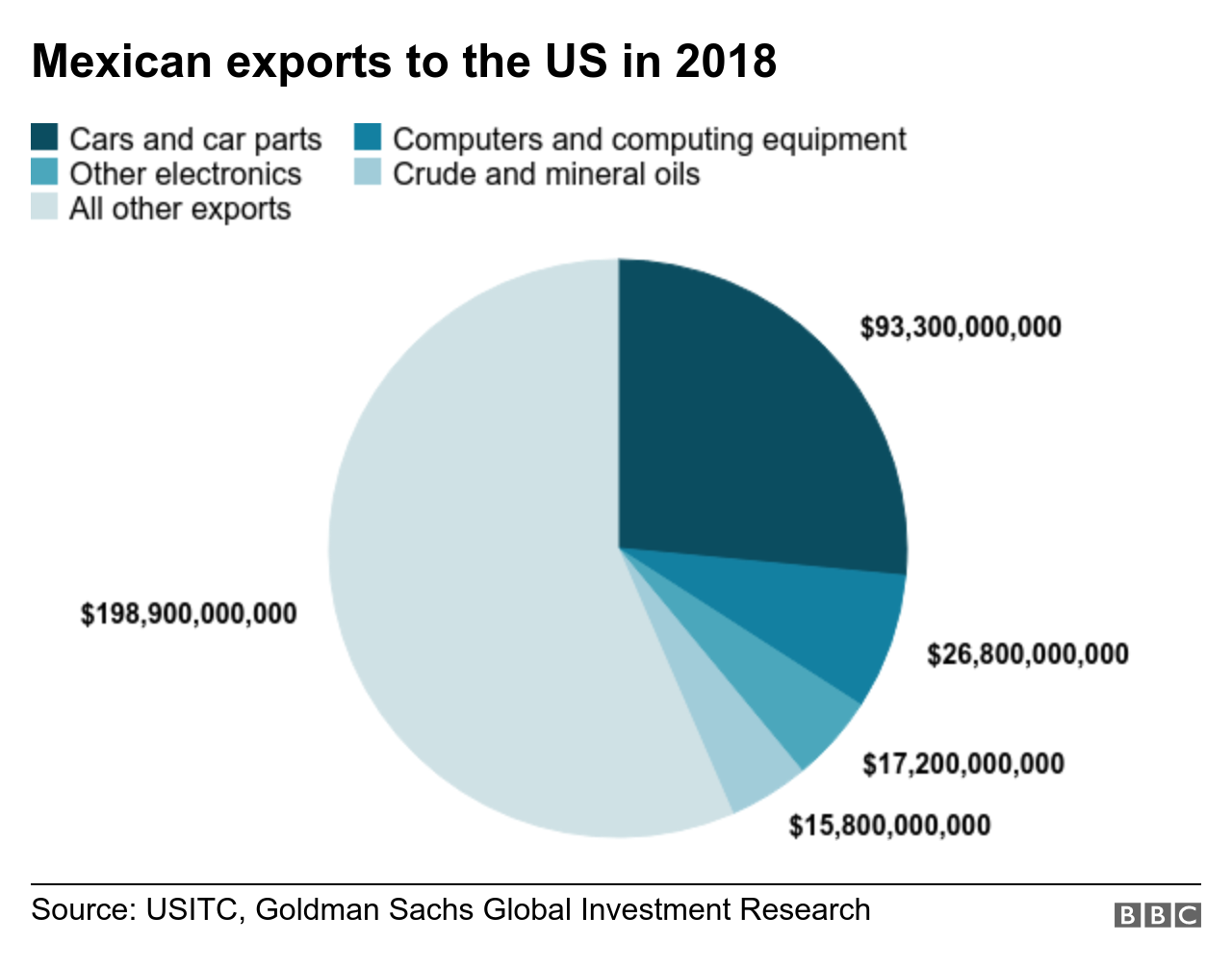
Source: co.uk
Analyzing Trump’s tariffs on Canada, Mexico, and China is fascinating, but sometimes a quick detour to the world of football can be equally engaging. For example, the recent Tottenham Lens Kevin Danso transfer deal details, Tottenham Lens Kevin Danso transfer deal details , highlight the complexities of international trade and player movement. Ultimately, while the specifics of the transfer are interesting, the bigger picture of the impact on these countries’ economies through tariffs is still worth considering.
The Trump tariffs, imposed on various goods from Canada, Mexico, and China, triggered a cascade of political and social repercussions across the globe. These trade disputes, far from being simply economic maneuvers, deeply impacted nationalistic sentiments, public trust in international trade, and the very fabric of international relations. The following sections delve into the specific political responses, social hardships, diplomatic efforts, and public reactions to these controversial trade policies.
Political Responses in Affected Countries
The imposition of tariffs sparked diverse political responses across the targeted countries. Canada, Mexico, and China each adopted distinct strategies to counter the tariffs, ranging from retaliatory measures to diplomatic negotiations. Canada, for example, employed a combination of bilateral discussions and multilateral approaches to mitigate the economic impact of the tariffs on its industries.
- Canada’s response included retaliatory tariffs on U.S. goods, aiming to offset the negative impact of the Trump administration’s actions. These actions demonstrate a willingness to defend national economic interests in the face of perceived unfair trade practices.
- Mexico’s reaction involved both bilateral and multilateral diplomatic efforts to negotiate and resolve the trade disputes. Mexico’s government actively sought to minimize the negative consequences of the tariffs on its export-oriented economy.
- China, in response, enacted retaliatory tariffs on U.S. goods and intensified efforts to develop its domestic industries to reduce its reliance on external markets.
Social Implications: Job Losses and Economic Hardship
The tariffs directly affected numerous sectors across the affected countries, leading to job losses and economic hardship. Industries reliant on exports faced reduced demand, while those producing substitute goods saw increased costs. These consequences were felt disproportionately by workers in specific sectors and communities.
- The agricultural sector in certain regions of the United States experienced considerable hardship due to the tariffs on agricultural products from countries like Canada, Mexico, and China. Farmers suffered reduced export opportunities, leading to financial strain and job losses.
- The manufacturing sector in the United States, as well as in Canada, Mexico, and China, was also significantly affected by the tariffs, leading to factory closures and reduced employment in those industries.
- The imposition of tariffs contributed to an increase in consumer prices, impacting household budgets across all income brackets.
Diplomatic Efforts to Resolve Trade Disputes
Multiple rounds of diplomatic efforts were undertaken to resolve the trade disputes stemming from the tariffs. These efforts included bilateral negotiations, multilateral talks, and consultations with international organizations.
Analyzing Trump’s tariffs on Canada, Mexico, and China is fascinating, but honestly, I’m more excited about the Beyoncé Cowboy Carter tour announcement before the Grammys! Beyoncé Cowboy Carter tour announcement before Grammys is a major cultural event. Still, the economic fallout of those tariffs is something to watch, especially given the potential ripple effects on global trade and supply chains.
It’s a complex situation, and we’ll see how it all plays out.
- The United States engaged in bilateral discussions with Canada and Mexico to address trade concerns. These discussions often involved attempts to negotiate compromises and mitigate the economic fallout of the tariffs.
- The World Trade Organization (WTO) played a significant role in mediating some of the disputes, although its effectiveness was often limited by the political motivations behind the tariffs.
- The tariffs’ impact on international relations was undeniable, as they created mistrust and a sense of adversarialness between the involved nations.
Public Protests and Advocacy Campaigns
The imposition of tariffs prompted public protests and advocacy campaigns in the affected countries. These actions highlighted the public’s concerns about the economic and social consequences of the trade policies.
- In Canada, farmers and businesses impacted by the tariffs organized protests and advocacy campaigns to voice their concerns to the government and the public.
- Similar reactions occurred in Mexico, with affected sectors organizing to demand support and action from the government.
- In China, public protests and advocacy campaigns against the tariffs were less prevalent but still reflected the concern about the negative impacts on the economy.
Impact on Political Relationships Between Countries
The tariffs significantly altered political relationships between the countries involved. Trust diminished, and tensions escalated, impacting future trade negotiations and international cooperation.
- The tariffs created a sense of mistrust and animosity between the United States and its trading partners, leading to a more adversarial approach to international trade.
- The tariffs’ effect on diplomatic relations between the involved countries was substantial, and it significantly affected the willingness to cooperate in future trade negotiations.
- The tariffs demonstrated a clear shift away from the previous emphasis on multilateral cooperation in international trade and toward more protectionist policies.
Long-Term Consequences
The Trump tariffs, while initially intended to address perceived trade imbalances, have had far-reaching and potentially long-lasting consequences for global trade dynamics. These impacts extend beyond immediate economic effects, influencing international business practices and potentially reshaping the landscape of international trade regulations. The potential for retaliatory measures and the lasting impact on specific sectors require careful consideration.
Potential for Retaliation and Further Trade Wars
The imposition of tariffs often triggers retaliatory measures from affected countries. This can lead to a cycle of escalating tariffs, creating a trade war that negatively impacts global economic growth. For example, China’s response to US tariffs included imposing tariffs on US goods, leading to disruptions in supply chains and increased costs for businesses. This escalation highlights the unpredictable and potentially damaging nature of trade wars.
Lasting Impact on International Business Practices
The Trump tariffs have forced businesses to adapt their strategies, including diversifying supply chains, seeking alternative markets, and investing in domestic production. Companies now face a more complex and uncertain global trade environment, requiring greater flexibility and preparedness for potential disruptions. Businesses have had to reassess their risk tolerance and explore new avenues for international operations, potentially shifting global economic centers of gravity.
Changes to International Trade Regulations in the Long Term, Trump tariffs impact on Canada Mexico and China analysis
The tariffs have prompted discussions about the need for reforms in international trade regulations. Concerns about unfair trade practices, particularly regarding intellectual property protection and forced technology transfer, are likely to be further debated and potentially lead to revised agreements. The potential for renegotiating existing trade agreements and establishing new frameworks to address concerns about trade imbalances and unfair practices is high.
This could involve a re-evaluation of the World Trade Organization (WTO) rules and procedures, as well as a shift toward more protectionist policies in certain regions.
Comparison of Long-Term Consequences for Stakeholders
| Stakeholder | Potential Positive Consequences | Potential Negative Consequences |
|---|---|---|
| US Businesses | Potential for increased domestic production and reduced reliance on foreign suppliers. | Increased costs, supply chain disruptions, and reduced export opportunities. |
| Foreign Businesses (Canada, Mexico, China) | Opportunities to expand into new markets and diversify supply chains. | Reduced access to US markets, increased costs, and supply chain disruptions. |
| Consumers | Potential for lower prices if domestic production increases and competition increases. | Higher prices due to tariffs, reduced product choices, and potential shortages. |
| Governments | Potential for increased tax revenue from tariffs. | Reduced economic growth, trade disputes, and potential loss of international influence. |
Ultimate Conclusion
In conclusion, the Trump tariffs’ impact on Canada, Mexico, and China was multifaceted and far-reaching. While the motivations behind these policies varied, the consequences on businesses, employment, and global trade dynamics were undeniable. This analysis underscores the importance of considering the complex interplay of economic, political, and social factors when assessing the long-term effects of such trade actions.
Answers to Common Questions
What were the specific products targeted by the tariffs in each country?
The Artikel details the specific product categories targeted in each country. Further research into the precise product listings is recommended for a more detailed understanding.
How did the tariffs affect international supply chains?
The tariffs disrupted established international supply chains, leading to increased costs, delays, and the search for alternative routes. The analysis covers this impact in detail.
Were there any successful attempts to resolve the trade disputes diplomatically?
The analysis includes a section on political and diplomatic efforts to resolve the disputes. Specific examples and outcomes are mentioned.
What were the financial consequences for affected companies?
The analysis discusses financial reports and the impact on specific companies. Refer to the “Economic Analysis of Specific Sectors” section for details.

